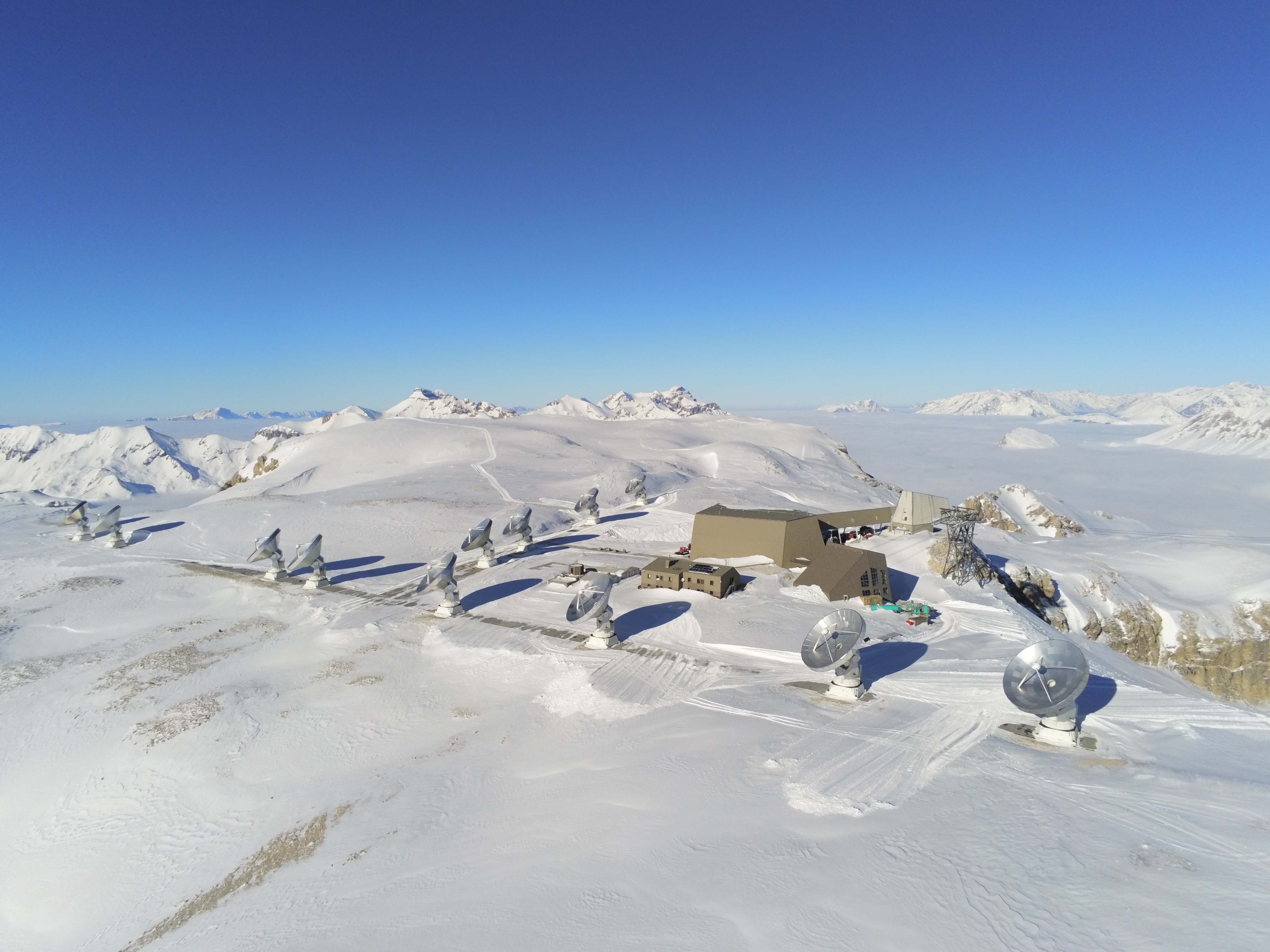News
NOEMA Steps Up to Full Sensitivity
 |
| Eight years after the inauguration of the first NOEMA antenna, the array is now complete with the installation of the 12th antenna. Credits: J.Boissier, IRAM |
Operated by IRAM, NOEMA, the Northern Extended Millimeter Array, is one of Europe's largest facilities for astronomical research: a network of high-precision radio antennas located on the Plateau de Bure in the French Alps.
On time for the start of the new year, NOEMA has reached its full sensitivity with the commissioning of its 12th Antenna. With this milestone, NOEMA observations of the celestial millimeter-wave radio spectrum will be of unprecedented quality, and will provide researchers in France, Germany, Spain and around the world the opportunity to study the physical and chemical processes driving the evolution of the cosmos from its very early phase until today in incredible detail.
NOEMA provides scientists the ability to study cold matter in the cosmos, just a few degrees above absolute zero (-273.15 degrees), investigate the formation, composition and dynamics of entire galaxies, but also young and old stars, comets, interstellar molecules or the environment of black holes, in order to solve the most fundamental questions of modern astronomy.
Furthermore, NOEMA is able to penetrate regions of the universe that are not visible with classical optical telescopes, opening a window into otherwise obscured processes of evolution, such as interstellar clouds/nebulae behind whose dust mantle stars are born and new planetary systems are formed.
The construction of the NOEMA antennas at the exceptional site of Plateau de Bure, and the development of the accompanying instrumentation, has kept IRAM and European high-tech industry active for nearly ten years. As the array is now complete, the sharpness of its radio images will further increase by large margins once the baseline configurations are completed in October 2022, a step which will conclude the NOEMA construction phase. This will not however, mark the end of development for NOEMA, as important further evolution in instrumental performance is foreseen over the coming years.
*****
Further Information
IRAM is a partnership of CNRS (Centre National de la Recherche Scientifique), France, the MPG (Max-Planck-Gesellschaft), Germany and the IGN (Instituto Geográfico National), Spain. These partners provided the major part of the specific investments for NOEMA. A part of the specific funding of CNRS was received through the French ANR (Agence National de Recherche) EQUIPEX program. Additional project funding was provided by external partnerships with the University of Michigan, Ann Arbor, USA, the Purple Mountain Observatory Nanjing and the Nanjing University, China as well as the University of Wisconsin, Madison, USA. The development of the VLBI phasing system for the EHT was also supported by the ERC Synergy Grant BlackHoleCam.

